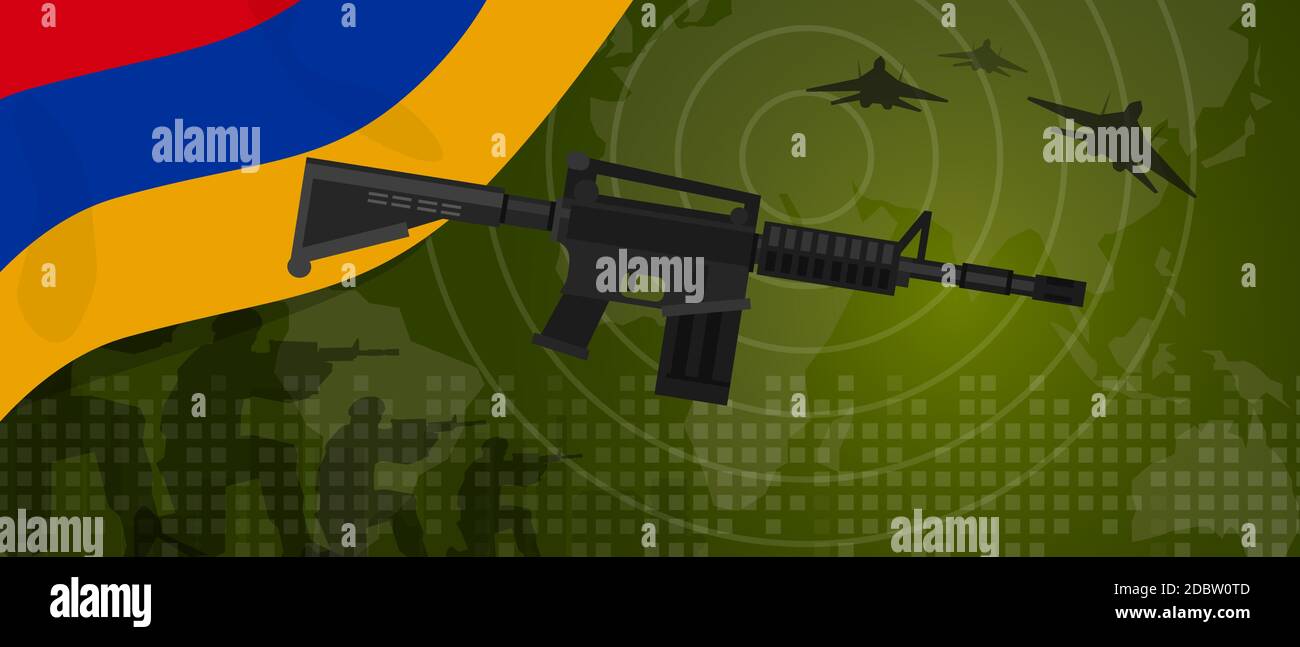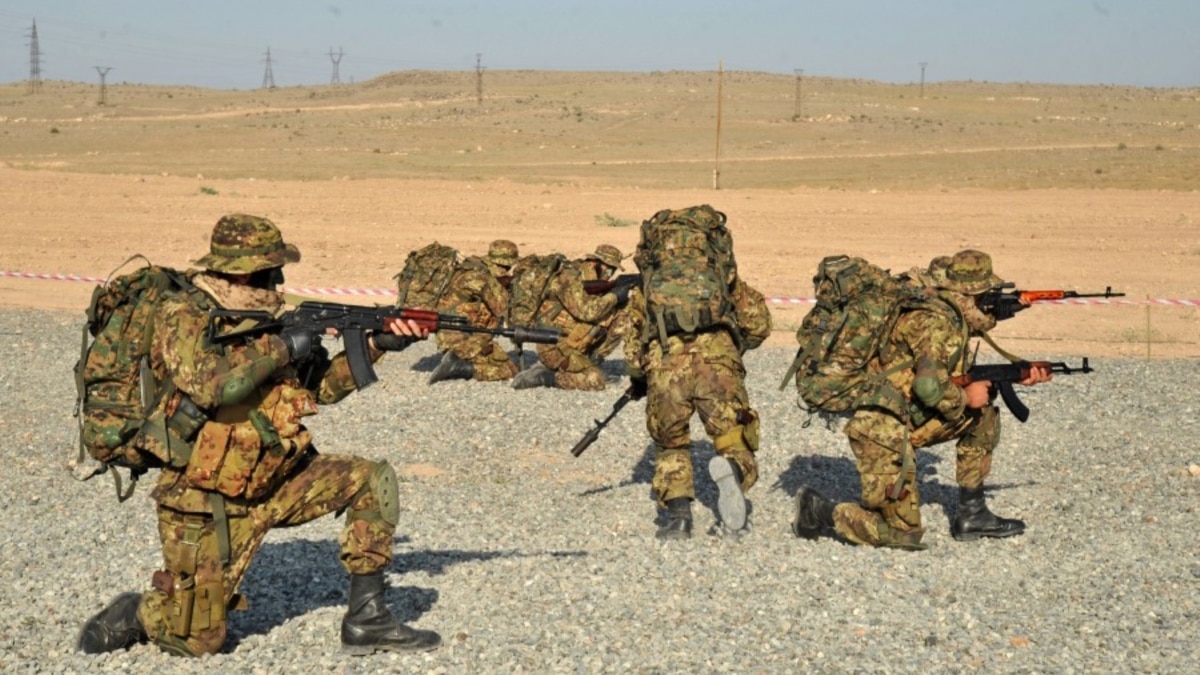Armenia Military Power - The recent unrest in Kazakhstan has certainly turned the tide of the Kremlin administration keen to strengthen its domestic hegemon position. However, the incident once again demonstrated Yerevan's growing dependence on Moscow.
Armenian Armed Forces soldiers in Kazan, Russia, during the Joint Security Treaty Organization military exercise. November 2021. Photo: Kosmogenez / Shutterstock
Armenia Military Power

When Kazakhstan President Kassym-Jomart Tokayev called for military help from his allies from the Collective Security Treaty Organization (CSTO) on January 5 to quell anti-government protests, Armenian Prime Minister Nikol Pashinyan first took to social media to announced his support. As the chairman of the CSTO, he said that the organization will send a peacekeeping team to stabilize the situation in the country. According to Pashinyan, civil unrest in different parts of Kazakhstan was organized from abroad. As a result, the CSTO bond statement (Section Four) will be implemented to respond to the situation. On January 7, Armenia's defense ministry confirmed that it had sent 100 troops to Kazakhstan as part of the CSTO peacekeeping mission. In photos shared on various social media, Armenian soldiers are seen guarding Almaty's main bakery.
A Year After War, Armenian Prisoners Still Bargaining Chips In Azerbaijan
The Armenian part brought Kazakhstan's operations home immediately. When the current government came to power through popular street demonstrations in 2018, Pashinyan's support for implementing CSTO against anti-government protesters was seen as an attack on the democratic values he claims to follow. For some, this move could mark Pashinyan's slow return to domestic politics, adding a new tone to the fragile political situation in the country. On the other hand, sending troops to Kazakhstan a year after Yerevan's humiliating victory in its war with Azerbaijan angered the Armenian population. This move has certainly put pressure on Armenia's small military forces. It is an established fact that Yerevan is struggling to strengthen its positions on the state's border with Azerbaijan and is asking for Russian help in this regard. Moscow troops are already guarding Armenia's borders with Iran and Turkey.
What has surprised outside observers is Armenia's involvement in a new Russian-led initiative despite its renewed efforts to present itself as a reliable western ally. Pashinyan's participation in Biden's virtual US Democracy Summit on December 9, is part of a larger effort to be seen as one of Washington's "like-minded partners". The victory will open several avenues for American support regarding the state's strategic position after the war. However, recent events have made Yerevan's dependence on Russia even clearer. This is particularly true in terms of security, with Armenia's involvement in Kazakhstan mirroring its use of security forces to assist the Syrian mission in Russia in 2019. Importantly, this has reached its peak of confidence after the 44-day war against Azerbaijan. Finding control over most of the disputed territories of Nagorno-Karabakh, Baku emerged as the ultimate victor and upgraded its relations with Turkey to the level of an alliance. At the time, the United States in Yerevan criticized Armenia for joining Russia's cooperation with the Assad regime, which has killed civilians and caused a humanitarian crisis in Syria. The involvement of the CSTO in Kazakhstan to support an authoritarian regime is not good for Armenia's relationship with the West. Various western political circles have already seen the military presence of the CSTO in Kazakhstan as a key element of Russia's efforts to restore the old borders of the Soviet Union. As a result, Armenia's involvement in this process can only damage its western relations.
Armenia's desire to participate in CSTO activities in Kazakhstan is interesting in its recent experiences with the organization. Contrary to what Yerevan thought, the military alliance did not come to its rescue during the Second Karabakh War in 2020. As a result, Armenia had to return a large part of the occupied lands around Karabakh region to Azerbaijan. The CSTO was of the opinion that Armenian territory was not recognized in the territory where the Azerbaijani army was leading. The organization cannot invoke CSTO Article Four and provide military assistance. In addition, the organization did not take any action during the conflict between Armenia and Azerbaijan in May 2021. In fact, its response was limited to a general statement saying that it will follow the events closely and take action if there is need
Azerbaijan's continued role as a key strategic partner for most CSTO member states (especially Russia) played a major role in the group's reluctance to engage in Karabakh. Indeed, the CSTO and the Eurasian Economic Union (EAEU) Kazakhstan recently passed many resolutions that are clearly pro-Azerbaijan in nature. In a recent visit to Baku, the Prime Minister of Kazakhstan and the Minister of Foreign Affairs Mukhtar Tleuberdi praised the country for restoring most of its internal stability and implementing the resolutions of the United Nations Security Council. At the same time, Azerbaijan and Kazakhstan joined the format of the Organization of Turkic States. Through cooperation with the EU and China, the two states are exploring joint projects to facilitate intercontinental trade.
Maneuver, Modernization, And The Second Nagorno Karabakh War > Air Land Sea Space Application (alssa) Center > News
Ironically, Armenia's distrust of Russia since the 1990s has endangered its own security and that of its neighbors. For example, Russia could send peacekeepers to Azerbaijan after the second Karabakh war could have been avoided if Armenia had approached the negotiations in a reasonable manner. Western countries should look at the geopolitical consequences of Armenia's pro-Russian foreign policy and develop their foreign policies accordingly.
Aleksandar Srbinovski is a journalist with more than 15 years of experience working in print and online media. He worked for
, Internet TV, and Skok. He has a BA in journalism from the University of Saints Cyril and Methodius Skopje and continued his studies at the University of Oklahoma.

Dear Readers - New Eastern Europe is a non-profit publication published online and in print since 2011. Our mission is to frame discussion, raise awareness, and increase dialogue about the problems facing states in the past. the Soviet Union and under its control. But we can achieve this mission with the support of our donors. If you value our work, please consider making a donation. Both sides have accused each other of using heavy artillery, tanks, and helicopters. This is the most intense conflict between the two countries since 2016. In this Armenia vs Azerbaijan military power comparison, we look at their respective armies as the war rages on.
The Azerbaijan Armenia Conflict Hints At The Future Of War
Azerbaijani forces launched a "massive offensive" in the northeastern and southern regions of Karabakh on Monday, according to Armenia. Karabakh's defense ministry told media that 26 of its soldiers had died on Monday, bringing the death toll to 84.
A total of 95 people lost their lives, including 11 civilians. Nine civilians were killed on the Azerbaijani side and two on the Armenian side. Armenia said 200 of its soldiers were wounded.
Armenia and Azerbaijan are located in the South Caucasus region, an important route for the distribution of oil and natural gas. An international team came in to diffuse the tensions.
A source of conflict between predominantly Christian Armenians and the predominantly Muslim Nagorno-Karabakh region of Azerbaijan. Azerbaijani President Ilham Aliyev is pushing to regain control of the country. Nagorno-Karabakh is part of Azerbaijan, and it is known all over the world.
Azerbaijan Armenia Conflict Is A Reminder Of Europe's Instability
But the 4,400-square kilometer mountainous region is controlled by the Armenian nation. About 95% of the country's population is ethnic Armenian. Nagorno-Karabakh's parliament passed a resolution in 1988 to become part of Armenia and later declare independence.
A war broke out between Azerbaijan and Armenia, in which more than 30,000 people died. Russia had to step in to fix a ceasefire, which was in effect for more than two years. However, there is no permanent agreement.
The United States called on both sides to stop the fighting immediately. UN Secretary General Antonio Guterres called on Armenia and Azerbaijan to "stop the conflict immediately." But there is no respite in sight.

France, Russia, and the United States have repeatedly intervened to arrange a ceasefire when the two countries have fought each other over the past three decades. But all three have their own problems like the novel coronavirus.
Armenia Is An Orphaned Client State
The comparison below is based on data from ArmedForces.eu and other sources. Azerbaijan is stronger than its rivals militarily. The military budget is much higher.
Armenia has an almost non-existent military base, which makes sense considering it is a landlocked nation surrounded by Azerbaijan, Iran, Turkey and Georgia. In contrast, Azerbaijan maintains a strong navy.
The international community has urged both countries to show restraint. But that may not be true. Comparisons of military power tell only half the story of Armenia's conflict with Azerbaijan. The country with the most international support has the upper hand.
Turkey has come out openly in support of the Turkic language of Azerbaijan. Turkish President Recep Tayyip Erdogan called Armenia "the biggest threat to peace in the region."
Nagorno Karabakh Conflict
Erdogan demanded that Armenia end its illegal occupation
Military drone range, laser range finder military, military range bags, military range targets, long range military radio, military radio range, military range finder, military long range binoculars, range rover military discount, military range rover, range of military drones, military range bag
0 Comments